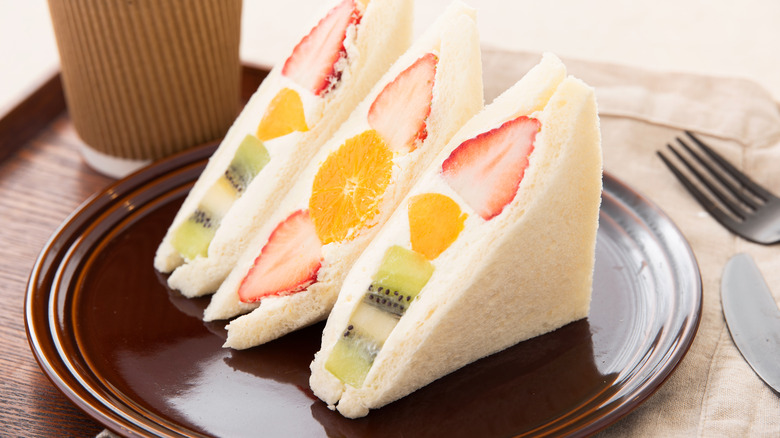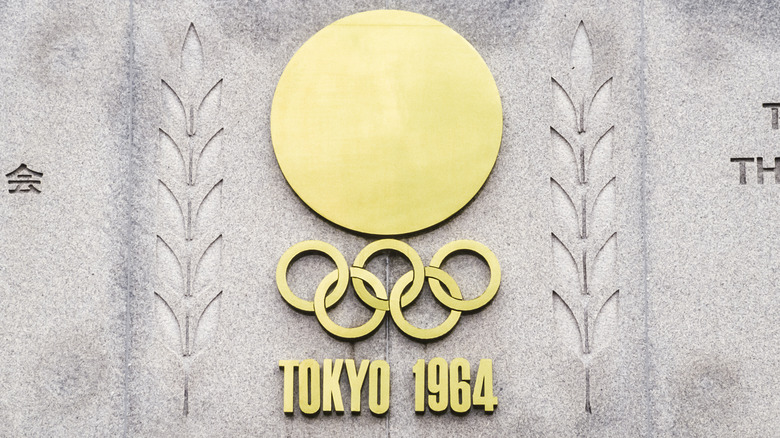How The Olympics Made Diagonal-Cut Sandwiches A Sensation In Japan
Believe it or not, people have pretty strong opinions on the shapes of their sandwiches. NPR reported on the rectangle-versus-triangle sandwich debate, stating that the diagonal slice has proponents across the board. Architect Kevin Harris from Baton Rouge tells the outlet that the diagonal sandwich cut exposes more of the enticing interior ingredients, which engages the eater's senses at first sight. Other chefs and food-industry experts note things such as symmetry and vertical dimension add to the aesthetic appeal while also being easier to eat. And then there's the math of it all, apparently. Vermont Technical College math professor Paul Calter says to consider the numbers: The total amount of crust on any sandwich remains the same no matter what, but the desirable crust-free surface area is much higher with diagonal cuts.
There's an interesting origin-story for the cutting style, too. We love Japan for many foodie trends — including ramen, sushi, and tempura — which romped across the waters to become mainstay items in restaurants and supermarkets worldwide. Though sandwiches don't instantly come to mind as being Japanese, there is a story that explains the popularity of diagonal-cut finger foods to the country. Once upon a time, it even led to a legal patent for sandwich cutting, according to the Japanese Food Guide.
In Japan, the diagonal-cut has links to an Olympic event, an enterprising bakery, and a unique, sensationalized type of sandwich.
Fruit sandwiches, a bakery, and the Olympics helped popularize diagonal-cut sandwiches
The Olympic Games carry a lot of sway on the world stage. Televised moments of history make or break an athlete's career, but the games can also affect myriad small businesses feeding overwhelming numbers of visitors from across the globe. That's exactly what happened with a bakery called Furenpan and the 1964 Tokyo Olympics, according to the Japanese Food Guide.
Three years prior to the opening games, the owners of Furenpan came up with the idea of cutting their sandwiches diagonally to better display the interior contents. But these weren't just any kind of sandwich; the company specialized in making Japanese fruit sandwiches. Fruits, once a luxury item in Japan, became more accessible in the early 1900s, giving rise to dedicated fruit parlors dishing out delicacies such as fruit shortcakes, parfaits, and, eventually, fruit sandwiches for easy eating at business centers and train stations. As the story goes, Fuhrenpan received a patent for the sandwich design as well as its accompanying wrapping style. But as the Olympics drew closer, they relinquished their patent in order to popularize the diagonal cut with Olympic visitors.
It worked. Long after the Olympic games came and went, diagonally cut fruit sandwiches are a mainstay on menus across Japan. The sandwich typically features large cuts of fresh fruit and sweetened cream between slices of shokupan, which is a sort of Japanese milk bread, explains Chopstick Chronicles.

